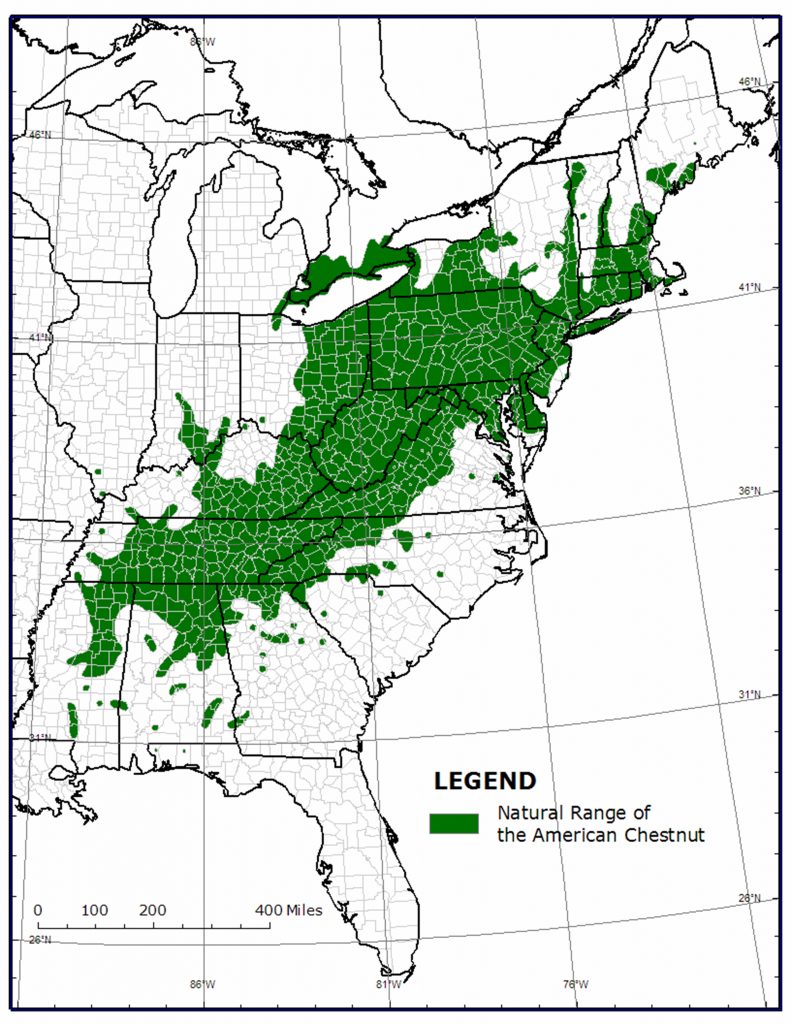The Tennessee Chestnut Project is a project of the Tennessee Environmental Council in partnership with The American Chestnut Foundation.
Project Overview:
Once an essential component of the entire eastern US ecosystem, the iconic American chestnut tree was important as food and home to wildlife, the nuts as cash crop to rural farmers, and the beautiful, hearty wood ideal for fencing, railroads, construction, furniture and musical instruments.
Approximately one hundred years ago, entire chestnut forests succumbed to a “blight”- an airborne fungus from Asia. Reforesting projects by The American Chestnut Foundation have introduced a blight-resistant genetic modification with the appearance of the original tree. In the Fall of 2019, TEC established multiple chestnut groves in five Tennessee State Parks across Tennessee.
Participating Tennessee State Parks include:
All parks planted six trees total:
Each grove includes educational signage so the public may visit and learn about the history of the functionally extinct chestnut trees. Visitors can see the long-term differences, as the American chestnut will die from blight after about 8 years, while the Chinese and hybrid American restoration chestnuts may live on to full mature canopy. This will illustrate to the viewing public how imperative it is to successfully cultivate healthy hybrid trees, and the value in supporting these ongoing efforts. This project will also deliver educational videos and events, promoted on social media and traditional news media to bring heightened public awareness to the restoration efforts. The groves will be mapped and tracked for 3-5 years here.
Local media stories covering the grove-planting events:
WBIR Channel 10 News (NBC, Knoxville)
Crossville Chronicle News Article
A special thanks to the American Chestnut Foundation, Tennessee State Parks, and the Bonnaroo Works Fund for making this project a success.
Project Overview:
Once an essential component of the entire eastern US ecosystem, the iconic American chestnut tree was important as food and home to wildlife, the nuts as cash crop to rural farmers, and the beautiful, hearty wood ideal for fencing, railroads, construction, furniture and musical instruments.
Approximately one hundred years ago, entire chestnut forests succumbed to a “blight”- an airborne fungus from Asia. Reforesting projects by The American Chestnut Foundation have introduced a blight-resistant genetic modification with the appearance of the original tree. In the Fall of 2019, TEC established multiple chestnut groves in five Tennessee State Parks across Tennessee.
Participating Tennessee State Parks include:
- Bledsoe Creek State Park - Sumner County
- Cumberland Mountain State Park - Cumberland County
- Nathan Bedford Forrest State Park - Benton County
- Montgomery Bell State Park - Dickson County
- Panther Creek State Park - Hamblen County
All parks planted six trees total:
- 2 native American chestnut trees
- 2 Chinese chestnut trees
- 2 blight-resistant hybrid restoration chestnut trees
Each grove includes educational signage so the public may visit and learn about the history of the functionally extinct chestnut trees. Visitors can see the long-term differences, as the American chestnut will die from blight after about 8 years, while the Chinese and hybrid American restoration chestnuts may live on to full mature canopy. This will illustrate to the viewing public how imperative it is to successfully cultivate healthy hybrid trees, and the value in supporting these ongoing efforts. This project will also deliver educational videos and events, promoted on social media and traditional news media to bring heightened public awareness to the restoration efforts. The groves will be mapped and tracked for 3-5 years here.
Local media stories covering the grove-planting events:
WBIR Channel 10 News (NBC, Knoxville)
Crossville Chronicle News Article
A special thanks to the American Chestnut Foundation, Tennessee State Parks, and the Bonnaroo Works Fund for making this project a success.



